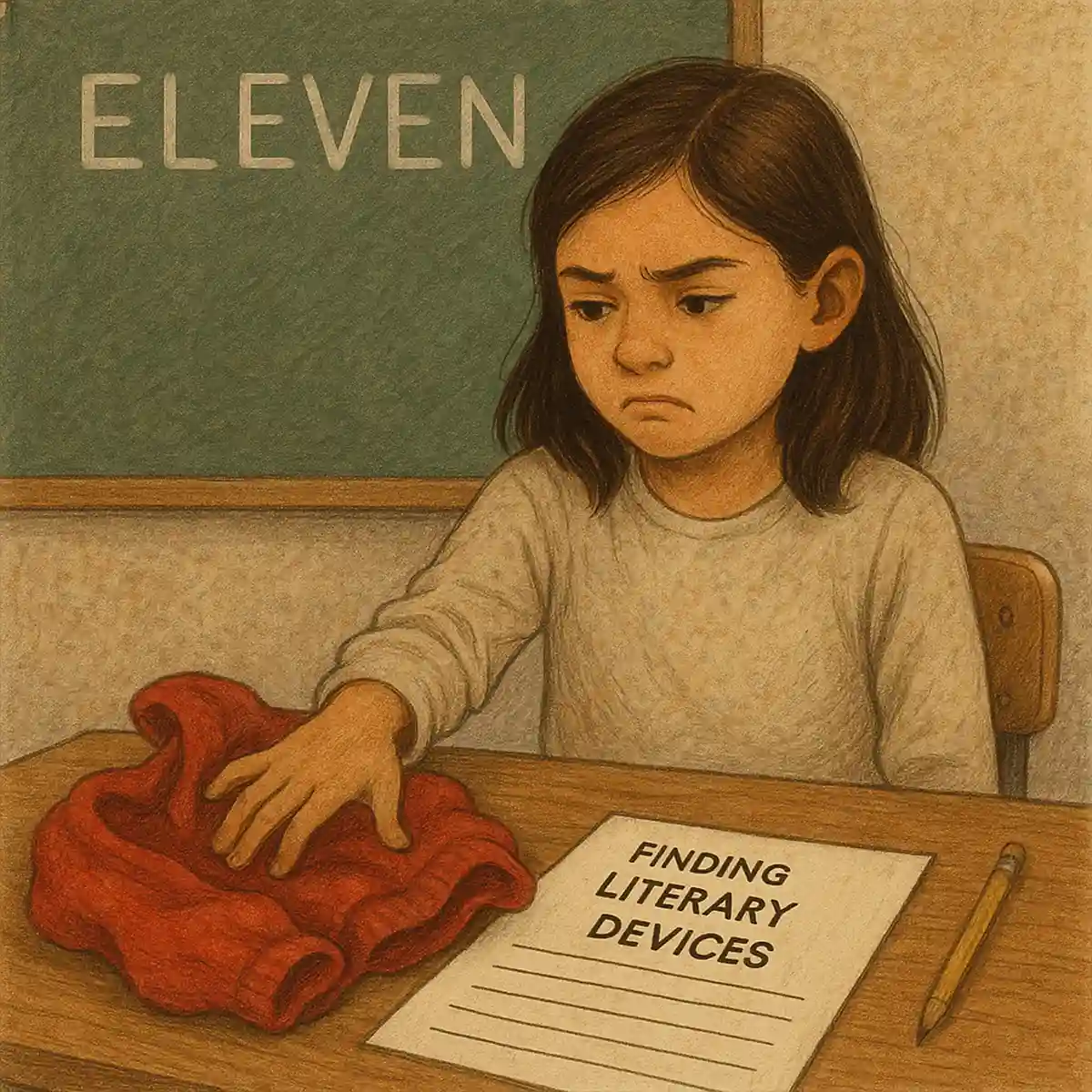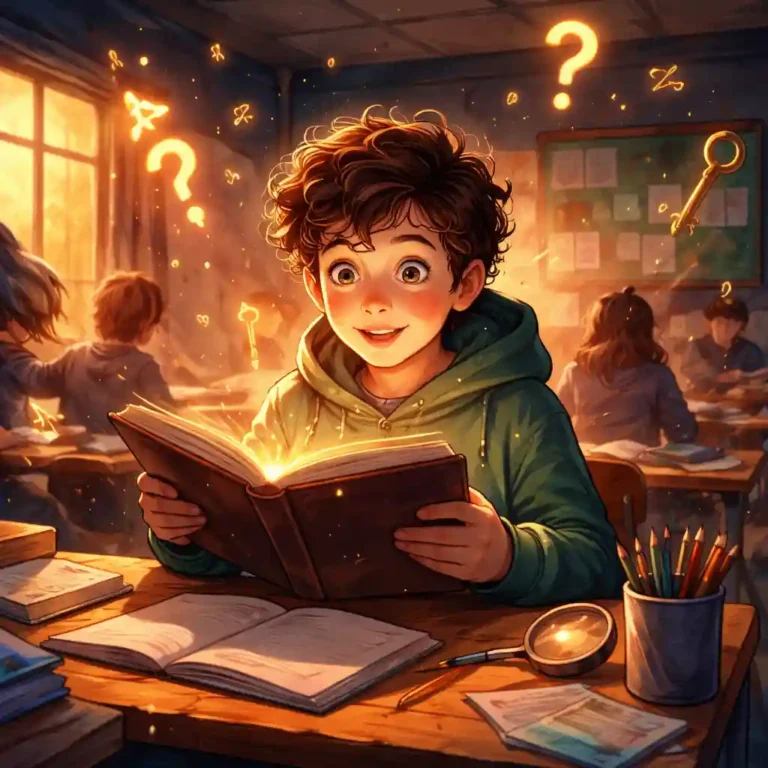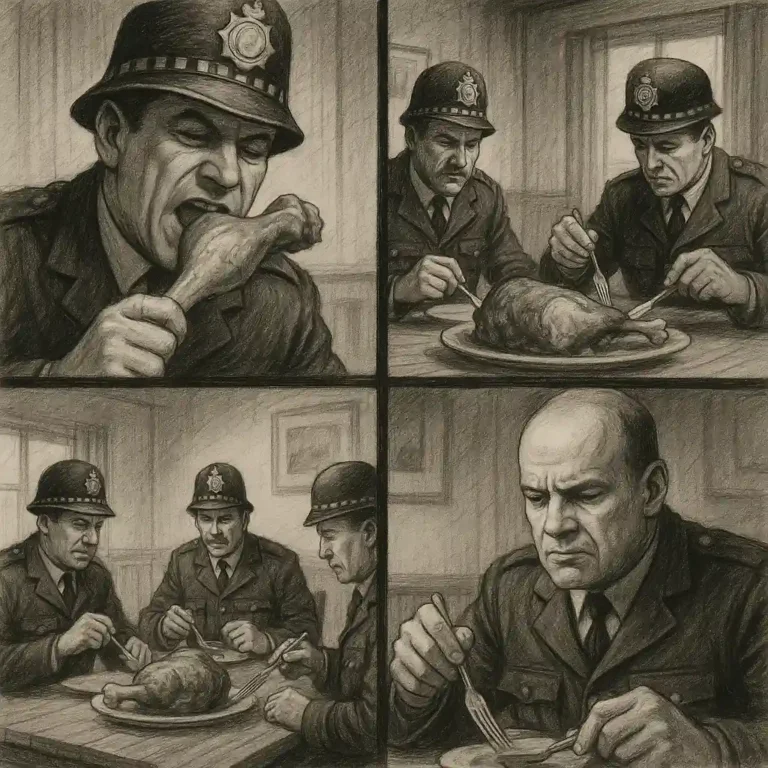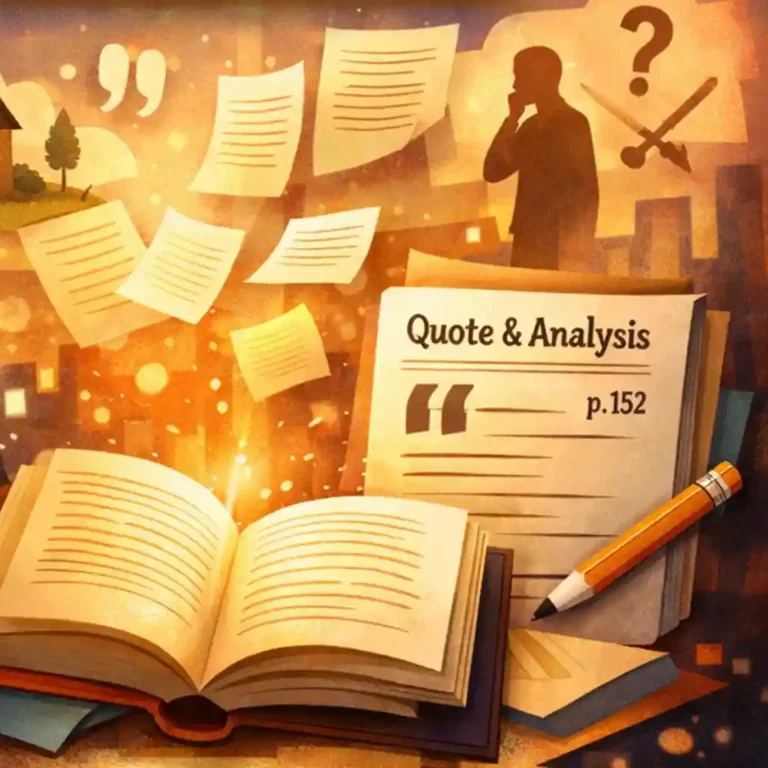Day 14: Finding Literary Devices in Fiction Lesson Plan
1. Silent Reading (15 minutes)
As always, begin class with 15 minutes of silent reading. Encourage students to log their thoughts or track themes, characters, or devices they notice in their independent novels.
2. Quick Quiz on Capitalization
Follow up the reading session with a short quiz on capitalization rules. This reinforces yesterday’s lesson while keeping students accountable for remembering basic grammar conventions.
Capitalization Quiz
Capitalization Answer Key
Review of Key Literary Devices
Together as a class, review the following seven literary devices. Students should add examples from their independent reading or from Eleven when possible:
Simile – A comparison using like or as.
Metaphor – A direct comparison of two unlike things without using like or as.
Imagery – Descriptive language appealing to the senses.
Symbolism – When one thing represents something deeper, such as an idea or theme.
Hyperbole – An exaggerated statement for effect.
Tone – The author’s attitude toward the subject or reader.
Repetition – The intentional reuse of a word, phrase, or structure for emphasis.
4. Finding Literary Devices in Eleven
Students will then work with a Finding Literary Devices in Eleven worksheet (button with download link + teacher answer key will be provided). In this activity, students identify examples of the devices discussed and analyze how they contribute to the story’s meaning and emotional impact.
This activity helps students strengthen their ability to find and interpret literary devices in fiction—an essential step in becoming more thoughtful, critical readers.
Conclusion
By the end of Day 14, students will have reinforced both their grammatical precision and their literary insight. The capitalization quiz keeps foundational writing skills sharp, while the exploration of literary devices in Eleven deepens their understanding of how authors craft meaning. Together, these activities bridge mechanics and interpretation—showing students that great writing isn’t just about following rules, but about using those rules to express ideas clearly and powerfully.
Click here for a copy of “Eleven”
Student Worksheet
Teacher Answer Key
Back to the Complete Grade 9 Course






